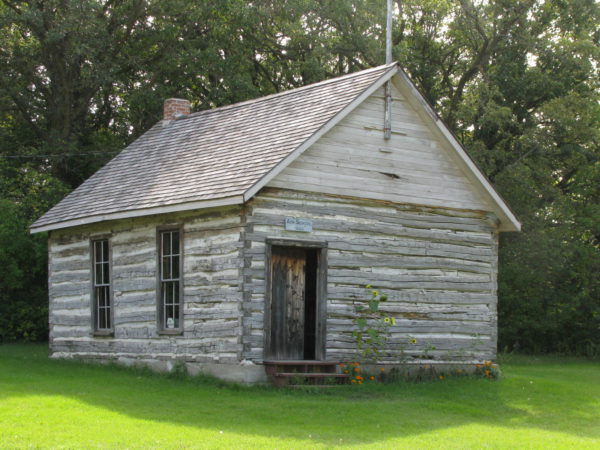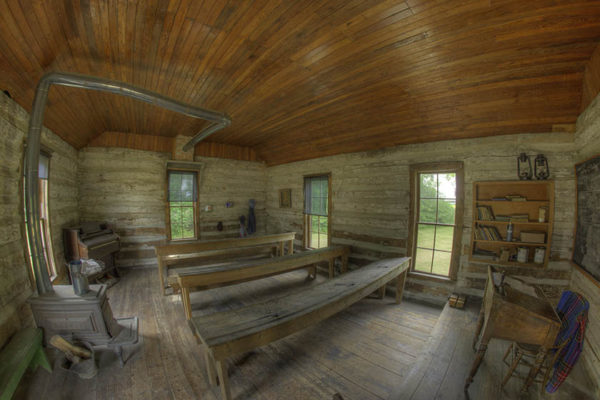
The Ayr School is representative of schools that appeared in pioneer Manitoba. It is a very Spartan building. The desks were long benches. The students used slates and chalk as there were no notebooks. The blackboards were boards painted black and the school was heated by a wood stove. The washroom facilities would have consisted of an outhouse. Water would have been provided by pail from a nearby source. While some pioneer schools had their own water well, other schools did not. Someone then had to obtain water from a nearby well, stream or pond on a daily basis.
As well as functioning as a school, Ayr also served as a dance hall, community hall, church or another purpose the community needed. In the pioneer era, money was scarce and public buildings had to serve as multipurpose facilities.

Ayr School was originally located in the community known as “Mekiwin”, close to Gladstone. There are claims that the name “Mekiwin” is of Native origin and means “many dogs barking”; The Mekiwin post office apparently attracted many dogs, which heralded the arrival of every person with much yelping. Cree authorities at Brandon University disagree with this interpretation and claim that Mekiwin means “gift.”
There were only 149 schools in Manitoba when the log school house was built in 1883. The school, according to old school board minute books, was constructed of solid white poplar logs which cost the board $50. The original plans contain the specification that the teacher’s platform was to be built at the front of the room. This platform was to be ten inches above floor level. It is assumed that this was done to ensure that the teacher could clearly see to the back of the room and keep an eye on students. The completed log school cost approximately $500. The Board decided to raise $100 per year in taxation, and therefore, paid for the school in five years. In 1883, school taxes were set at four mills in the area and the average farmer paid $6.40 in school taxes per 300 acres.
Ayr School was used until 1908. In 1909, a concrete floor was put in and the building used as a stable. A new school was built right beside it and this school was used until 1962. In 1962, the school closed and the students were transported to Gladstone. In 1966, the school board donated the first Ayr school to the Manitoba Agricultural Museum for restoration and the school was subsequently moved to the Museum.
While pioneer schools provided an education it was often in the school of hard knocks. Ayr was no exception. Children had to walk to school. The more affluent families could provide the children with a horse. With no weather forecast or means to broadcast one even if one was available, the weather in the winter was a constant menace to children making their way to school or home. Being storm stayed at school was common in pioneer Manitoba. As the school was usually not in use at night there would have been no one to tend the wood stove and so the school on a winter morning would be almost as cold as it was outside before the first arrival could light a fire and begin heating the building. In this sort of environment, using slates and chalk made sense as one would not have to wait for the ink to thaw before writing. Using the outhouse in the winter would have been a chilling experience.
Epidemics of illness were prevalent. Records show that the school was closed for epidemics of mumps, scarlet fever, and Spanish influenza in the years extending from 1883 to 1910.
School teachers boarded with local families or with School Board members as rental accommodations in Pioneer Manitoba were rare. One of the first teachers at Ayr had to walk seven miles to school from the teacher’s residence. In hard times, they were often paid with goods instead of money. At the time of the first Ayr School, the teacher was generally anyone who had finished their grade ten or their high school. Later, the teachers were trained in a six week summer course in a “Normal School” in Brandon, Winnipeg, or Manitou.


